-
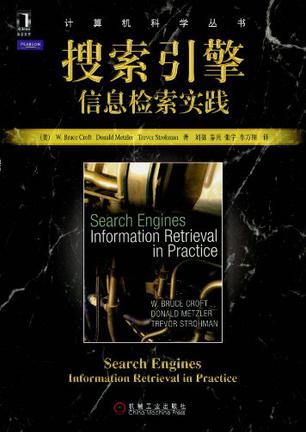
搜索引擎
本书介绍了信息检索(IR)中的关键问题,以及这些问题如何影响搜索引擎的设计与实现,并且用数学模型强化了重要的概念。对于网络搜素引擎这一重要的话题,书中主要涵盖了在网络上广泛使用的搜索技术。 本书适用于高等院校计算机科学或计算机工程专业的本科生、研究生,对于专业人士而言,本书也不失为一本理想的入门教材。 -

自己动手写搜索引擎
《自己动手写搜索引擎》是猎兔企业搜索开发团队的软件产品研发和项目实践的经验汇总。《自己动手写搜索引擎》全方位展现出一个商用级别的Lucene搜索解决方案,主要包括爬虫、自然语言处理和搜索实现部分。爬虫部分介绍了网页遍历方法和从网页提取主要内容的方法。 自然语言处理部分包括了中文分词从理论到实现以及在搜索引擎中的实用等细节。 其他自然语言处理的经典问题与实现包括:文档排重、文本分类、自动聚类、语法解析树、拼写检查、拼音转换等理论与实现方法。 在实现搜索方面,《自己动手写搜索引擎》用简单的例子介绍了完整的搜索实现过程,覆盖了从索引库的设计和索引库与数据库的同步到搜索用户界面设计与实现。搜索用户界面包括实现布尔逻辑查询、按区间范围查询、搜索结果按日期排序等。《自己动手写搜索引擎》还进一步介绍了搜索排序的优化方法。 最后以基于Lucene的搜索服务器Solr为例,展示了Lucene的最新应用方法。 -
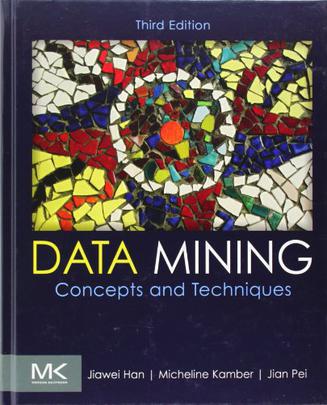
Data Mining
The increasing volume of data in modern business and science calls for more complex and sophisticated tools. Although advances in data mining technology have made extensive data collection much easier, it's still always evolving and there is a constant need for new techniques and tools that can help us transform this data into useful information and knowledge. Since the previous edition's publication, great advances have been made in the field of data mining. Not only does the third of edition of Data Mining: Concepts and Techniques continue the tradition of equipping you with an understanding and application of the theory and practice of discovering patterns hidden in large data sets, it also focuses on new, important topics in the field: data warehouses and data cube technology, mining stream, mining social networks, and mining spatial, multimedia and other complex data. Each chapter is a stand-alone guide to a critical topic, presenting proven algorithms and sound implementations ready to be used directly or with strategic modification against live data. This is the resource you need if you want to apply today's most powerful data mining techniques to meet real business challenges. * Presents dozens of algorithms and implementation examples, all in pseudo-code and suitable for use in real-world, large-scale data mining projects. * Addresses advanced topics such as mining object-relational databases, spatial databases, multimedia databases, time-series databases, text databases, the World Wide Web, and applications in several fields. *Provides a comprehensive, practical look at the concepts and techniques you need to get the most out of your data -
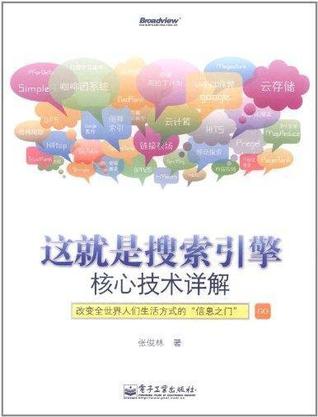
这就是搜索引擎
搜索引擎作为互联网发展中至关重要的一种应用,已经成为互联网各个领域的制高点,其重要性不言而喻。搜索引擎领域也是互联网应用中不多见的以核心技术作为其命脉的领域,搜索引擎各个子系统是如何设计的?这成为广大技术人员和搜索引擎优化人员密切关注的内容。 本书的最大特点是内容新颖全面而又通俗易懂。对于实际搜索引擎所涉及的各种核心技术都有全面细致的介绍,除了作为搜索系统核心的网络爬虫、索引系统、排序系统、链接分析及用户分析外,还包括网页反作弊、缓存管理、网页去重技术等实际搜索引擎必须关注的技术,同时用相当大的篇幅讲解了云计算与云存储的核心技术原理。另外,本书也密切关注搜索引擎发展的前沿技术:Google的咖啡因系统及Megastore等云计算新技术、百度的暗网抓取技术阿拉丁计划、内容农场作弊、机器学习排序等。诸多新技术在相关章节都有详细讲解,同时对于社会化搜索、实时搜索及情境搜索等搜索引擎的未来发展方向做了技术展望。为了增进读者的理解,全书大量引入形象的图片来讲解算法原理,相信读者会发现原来搜索引擎的核心技术理解起来比原先想象的要简单得多。 -
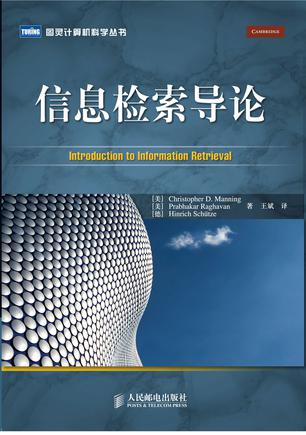
信息检索导论
封面图片为英国伯明翰塞尔福瑞吉百货大楼,其极具线条感的轮廓外型优美,犹如水波的流动。其外表悬挂了1.5万个铝碟,创造出一种极具现代气息的纹理装饰效果,有如夜空下水流的波光粼粼,闪烁于月光之下,使建筑的商业氛围表现到极致。设计该建筑的英国“未来系统建筑事物所”,将商场内部围合成一个顶部采光的中庭,配以交叉的自动扶梯,使购物环境呈现出一种凝聚的向心力和商业广告的展示效应。作为英国第二商业城市伯明翰的建筑地标,人们称该建筑为“未来的百货商店”。因其设计构思的前卫性,该建筑获得2004年英国皇家建筑学会的“建筑设计奖”和2004年“英国皇家工艺美术委员会奖”等多个奖项。 本书从计算机科学领域的角度出发,介绍了信息检索的基础知识,并对当前信息检索的发展做了回顾,重点介绍了搜索引擎的核心技术,如文档分类和文档聚类问题,以及机器学习和数值计算方法。书中所有重要的思想都用示例进行了解释,生动形象,引人入胜,实现了理论与实战的完美结合。 本书的三位作者均是信息检索领域的顶级专家,两位来自学术教育界,一位来自硅谷业界,使本书既具备深厚的理论基础,又代表了尖端科技水准。因此,该书甫一出版,即被奉为该领域的权威著作,备受瞩目。目前已被众多世界名校采用为信息检索课程的教材。 -
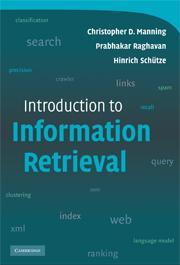
Introduction to Information Retrieval
Class-tested and coherent, this groundbreaking new textbook teaches classic web information retrieval, including web search and the related areas of text classification and text clustering from basic concepts. Written from a computer science perspective by three leading experts in the field, it gives an up-to-date treatment of all aspects of the design and implementation of systems for gathering, indexing, and searching documents; methods for evaluating systems; and an introduction to the use of machine learning methods on text collections. All the important ideas are explained using examples and figures, making it perfect for introductory courses in information retrieval for advanced undergraduates and graduate students in computer science. Based on feedback from extensive classroom experience, the book has been carefully structured in order to make teaching more natural and effective. Although originally designed as the primary text for a graduate or advanced undergraduate course in information retrieval, the book will also create a buzz for researchers and professionals alike. Contents 1. Information retrieval using the Boolean model; 2. The dictionary and postings lists; 3. Tolerant retrieval; 4. Index construction; 5. Index compression; 6. Scoring and term weighting; 7. Vector space retrieval; 8. Evaluation in information retrieval; 9. Relevance feedback and query expansion; 10. XML retrieval; 11. Probabilistic information retrieval; 12. Language models for information retrieval; 13. Text classification and Naive Bayes; 14. Vector space classification; 15. Support vector machines and kernel functions; 16. Flat clustering; 17. Hierarchical clustering; 18. Dimensionality reduction and latent semantic indexing; 19. Web search basics; 20. Web crawling and indexes; 21. Link analysis. Reviews “This is the first book that gives you a complete picture of the complications that arise in building a modern web-scale search engine. You'll learn about ranking SVMs, XML, DNS, and LSI. You'll discover the seedy underworld of spam, cloaking, and doorway pages. You'll see how MapReduce and other approaches to parallelism allow us to go beyond megabytes and to efficiently manage petabytes." -Peter Norvig, Director of Research, Google Inc. "Introduction to Information Retrieval is a comprehensive, up-to-date, and well-written introduction to an increasingly important and rapidly growing area of computer science. Finally, there is a high-quality textbook for an area that was desperately in need of one." -Raymond J. Mooney, Professor of Computer Sciences, University of Texas at Austin “Through compelling exposition and choice of topics, the authors vividly convey both the fundamental ideas and the rapidly expanding reach of information retrieval as a field.” -Jon Kleinberg, Professor of Computer Science, Cornell University